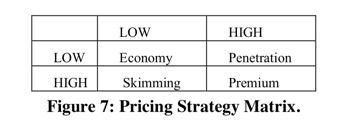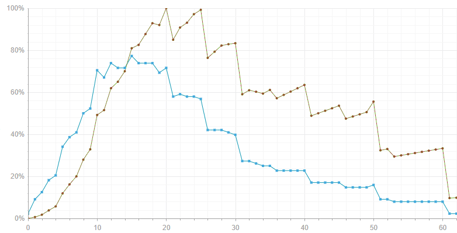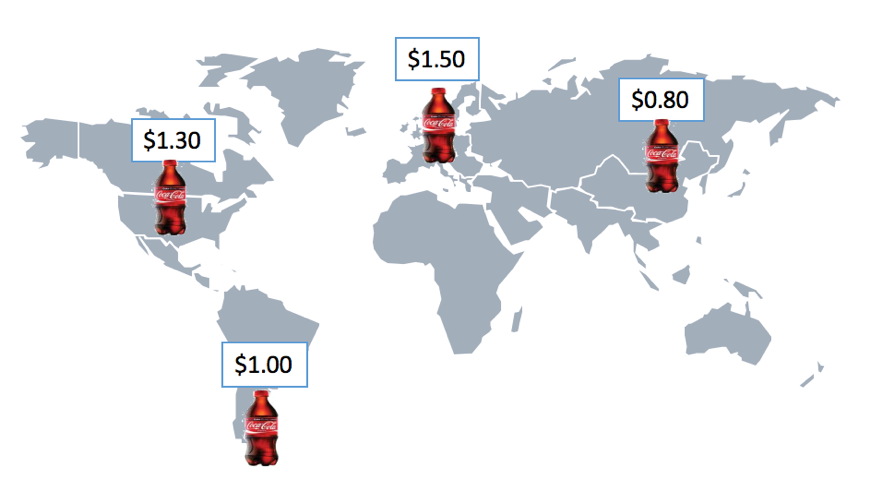7 Interesting Reads About International Pricing
 PriceBeam
·
5 minute read
PriceBeam
·
5 minute read

Companies that sell to multinational clients or sell their products globally will have to decide how to price their product in each market .Purchase power, needs, and preferences differ between countries and so does willingness to pay for a given product or service; to maximize profit, pricing research must be conducted for each market.
Have a look at our selection of 7 Interesting reads About International Pricing below:
1) International Price Differences: The Good the Bad and the Ugly

Prices should differ across different countries, but companies must not only reap the benefits (The Good) but also manage the costs (The Bad) and avoid the pitfalls (The Ugly)
Prices are almost never the same in international markets. They vary due to taxes, cost structures, local market needs, currency exchange rates, tariffs, differences in competitive situations and a myriad of other reasons. They even vary because this is the way it has always been. If looking at different industries, consumer products (CPG/FMCG) have more than 100% difference in prices, with even regional differences in e.g. the European Union of up to 50% for the same product. Car manufacturers are well-known for their price differences and even relatively global products such as computer software has had a number of bad PR cases where e.g. Australians would pay twice as much for Adobe software as US customers.
But international price differences are more good than bad. Here is why:
Continue reading: https://blog.pricebeam.com/international-price-differences-the-good-the-bad-and-the-ugly
2) An Examination of Factors that Affect Pricing Decisions for Export Markets
Pricing strategy has played an important role in consumer purchasing behavior and decision making process (Richard, 1985; Myers, 1997). For international markets, pricing is one of the most important elements of marketing product mix, generates cash and determines a company’s survival (Yaprak, 2001). However, scholars have not paid enough attention to international and export pricing (Kotabe and Aulak, 1993); Graham and Gronhaug, 1987). This paper examines factors that affect pricing decision for export markets, and sheds light on international pricing strategies in a global competitive market.
“In the long run, no single pricing strategy will always work best, and producers should be prepared to adjust to any opportunities or dangers which arise in the ever-changing market.” For export pricing, exporters should consider other factors such as freight and transport, duties, and risks.

Continue reading: http://www.jgbm.org/page/22%20Etienne%20Musonera%20.pdf
3) 6 ways to improve international launches through pricing

Barriers to entry and the difficulty of doing business abroad have reduced considerably over the last two decades, thanks to technologies such as the Internet. This means it is much easier to do business around the globe but also that brand and product communication is increasingly global. Customers or consumers in Germany can now see product features, prices and discounts offered in USA or Singapore, and may create bad publicity if they feel that what they pay for locally is not of the same value. International prices are also considerably more transparent than ever before. On the other hand, both willingness-to-pay and actual prices do differ considerably around the globe, be it of similar of even identical products. What an Indian or Brazilian customer is willing to pay for Product A may not be the same. Or, a German customer may value Feature B over Feature A whereas the Canadian or Danish customer really only cares about Feature B and maybe Feature C that is not even available in Germany.
So how do you plan and execute international market launches successfully, if there are such considerably differences in market's willingness-to-pay or actual price levels? Here is a collection of best practices and insights we have collected when running pricing projects around the globe.
Continue reading: https://blog.pricebeam.com/6-ways-to-improve-international-market-launches-through-pricing
4) Global Marketing Today
Pricing is one of the most critical parts of the marketing mix for international firms. Pricing, above all other elements of the marketing mix, is what creates revenue for the firm. The remaining “P’s (Product, Placement, and Promotion), contribute to cost for a company.
It can be observed that pricing technique can either make or break expansion efforts. Marketers must work cooperatively with other organizational departments, mainly Finance, to integrate finance, accounting, manufacturing, tax and legal components into the chosen pricing strategy. One of the biggest obstacles for multinational firms to overcome is how to set prices across different countries. There are many factors to consider to ensure that parallel gray or gray market situations do not occur.
Many different factors come into play when setting prices for the same product in different countries. Major influencers are labeled the 4 C’s:
- Company (costs, company goals)
- Customers (price sensitivity, segments, consumer preferences)
- Competition (market structure and intensity of competition)
- Channels (of distribution)

Continue Reading: https://globalmarketingtoday.wordpress.com/about/global-marketing-mix-price/
5) Differences in international willingness to pay: why local Insights matter

In the above example, two different willingness-to-pay curves are shown for two different markets. The horizontal axis shows the price and the vertical axis indicates willingness-to-pay optimum levels. So in the market represented by the blue curve, the optimal price is 15, whereas the optimal price in the other market is 25, i.e. where the curve peaks. If the price of 25 is also applied to market number 1, then demand would be about 20 percentage points (60 instead of 80) lower.
The above example is very common for international pricing, and shows why local insights are necessary. The good news is that if you do have such insights, you can much better optimize global pricing.
This article discusses some key things to consider when running price research globally.
Continue reading: https://blog.pricebeam.com/differences-in-international-willingness-to-pay-why-local-insights-matter
6) Which pricing strategy is the best fit for your international marketing plan?
There is a direct link between the factors influencing price setting and a company’s marketing strategy. The pricing strategy will depend on the company’s marketing objectives. The following are some marketing objective possibilities:
- Is the company entering a new market and hoping to attract customers’ attention and gain acceptance? If so, it should probably charge a low introductory price.
- Is the company looking to position itself in a particular way? If the company wants customers to view its products as luxury or quality goods, it should price accordingly.
- Is the market so far away that the company wants to minimize the administrative and operational costs of selling? If so, perhaps it should charge a single price.
- Is it seeking to recoup its investments within a narrow window? If so, it should charge whatever the market will bear before competitors drive down prices.
Companies’ marketing plans should also address day-to-day tactical marketing concerns. For example, should companies offer discounts for volume purchases? What kinds of special sales and promotions are appropriate?
Continue Reading: http://www.tradeready.ca/2015/fittskills-refresher/pricing-strategy-best-fit-international-marketing-plan/
7) Export Pricing Strategy
Pricing strategy has played an important role in consumer purchasing behavior and decision making process (Richard, 1985; Myers, 1997). For international markets, pricing is one of the most important elements of marketing product mix, generates cash and determines a company’s survival (Yaprak, 2001). However, scholars have not paid enough attention to international and export pricing (Kotabe and Aulak, 1993); Graham and Gronhaug, 1987). This paper examines factors that affect pricing decision for export markets, and sheds light on international pricing strategies in a global competitive market.
Pricing Summary:
It’s important to remember several key points when determining your product’s price:
-
Determine the objective in the foreign market.
-
Compute the actual cost of the export product.
-
Compute the final consumer price.
-
Evaluate market demand and competition.
-
Consider modifying the product to reduce the export price.
-
Include “non-market” costs, such as tariffs and customs fees.
-
Exclude cost elements that provide no benefit to the export function, such as domestic advertising.
Continue reading: https://www.trade.gov/pricing-strategy
If your company is looking for best practices in understanding customers' willingness-to-pay and optimizing prices, please sign up for a demo or try our cloud-based price research platform for free:
.png?width=400&height=100&name=PBLogoTransparent%20(1).png)




